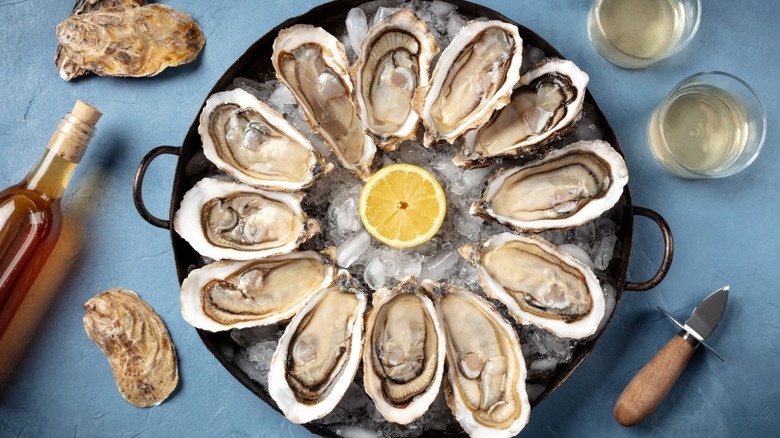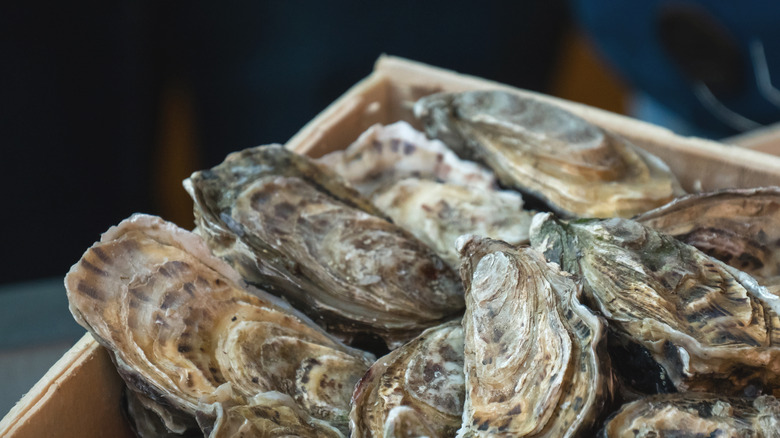Why New York City Used To Be Known For Its Oysters
Many cities around the country are associated with certain foods, sometimes even lending their name to the dish. Philadelphia is known for its cheesesteaks, Buffalo for its wings, Boston for its clam chowder and cream pie, and New Orleans for its gumbo, po'boys, and beignets, according to Taste of Home. As for New York City? These days, it's commonly linked to a number of dishes, including cheesecake, pizza, hot dogs, and pastrami on rye, explains the New York Times.
A hundred and fifty years ago, the list of foods associated with New York would have been quite different. In fact, oyster, the most popular food in New York "for a century" (via Vital Choice) doesn't even make the list today. Not only was New York known for its oysters back then, but it was actually a world leader — as Mark Kurlansky wrote in his book, "The Big Oyster," "The combination of having reputably the best oysters in the world in what had become inarguably the greatest port in the world made New York City, for an entire century, the world's oyster capital" (via Atlas Obscura).
New Yorkers loved oysters, which also helped build the city
In 1609, when Henry Hudson first arrived in New York, the harbor was home to around 350 square miles of oyster reefs, or nearly half of all the oysters in the world, according to Thrillist. Everyone, poor and rich, seemed to enjoy the briny bivalves, which could be found everywhere from the humble oyster cellar to fancy dining establishments — at one point in the 19th century, New Yorkers were consuming around a million oysters a day, and then using the shells to pave roads and make mortar paste for construction, reports Atlas Obscura.
Unfortunately, the oyster's popularity in New York was also its downfall. Unsustainable overharvesting, along with pollution of the harbor by sewage, and increasing use of landfill led to the remainder of New York's oyster beds being closed down by 1927 for being too toxic to eat (via the New York Public Library). A recent initiative, the Billion Oyster Project, hopes to rebuild the resource that New Yorkers so carelessly squandered by collecting oyster shells and using them to restore oyster reefs, according to its website. Those oysters may not be good enough to eat anytime soon, but they can help against storm surges and clean the water, explains Untapped New York, which is a worthy goal indeed.

